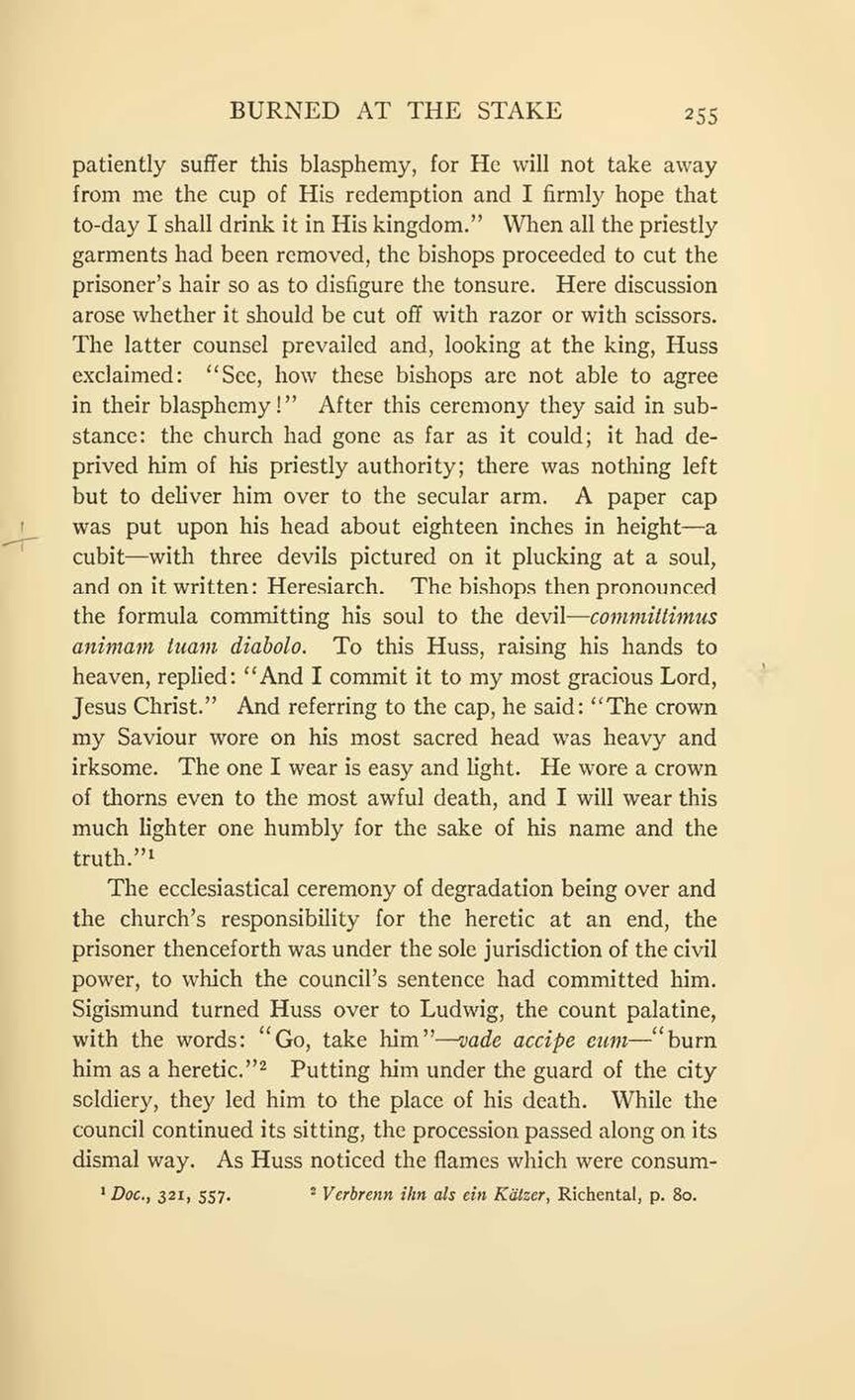patiently suffer this blasphemy, for He will not take away from me the cup of His redemption and I firmly hope that to-day I shall drink it in His kingdom.” When all the priestly garments had been removed, the bishops proceeded to cut the prisoner’s hair so as to disfigure the tonsure. Here discussion arose whether it should be cut off with razor or with scissors. The latter counsel prevailed and, looking at the king, Huss exclaimed: “See, how these bishops are not able to agree in their blasphemy!” After this ceremony they said in substance: the church had gone as far as it could; it had deprived him of his priestly authority; there was nothing left but to deliver him over to the secular arm. A paper cap was put upon his head about eighteen inches in height-a cubit-with three devils pictured on it plucking at a soul, and on it written: Heresiarch. The bishops then pronounced the formula committing his soul to the devil—committimus animam tuam diabolo. To this Huss, raising his hands to heaven, replied: “And I commit it to my most gracious Lord. Jesus Christ.” And referring to the cap, he said: “The crown my Saviour wore on his most sacred head was heavy and irksome. The one I wear is easy and light. He wore a crown of thorns even to the most awful death, and I will wear this much lighter one humbly for the sake of his name and the truth.“[1]
The ecclesiastical ceremony of degradation being over and the church’s responsibility for the heretic at an end, the prisoner thenceforth was under the sole jurisdiction of the civil power, to which the council’s sentence had committed him. Sigismund turned Huss over to Ludwig, the count palatine, with the words: “Go, take him”—vade accipe eum—“burn him as a heretic.”[2] Putting him under the guard of the city scldiery, they led him to the place of his death. While the council continued its sitting, the procession passed along on its dismal way. As Huss noticed the flames which were consum-
